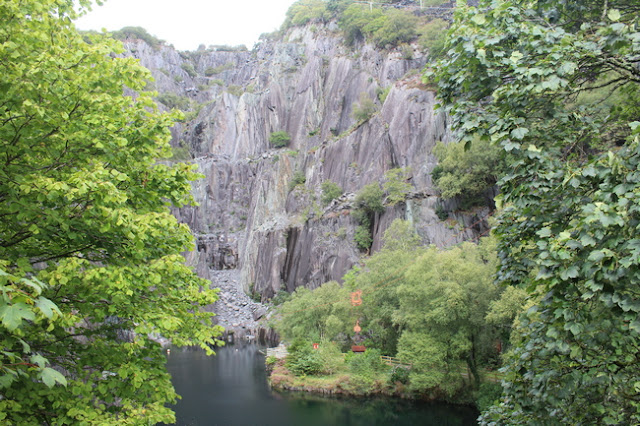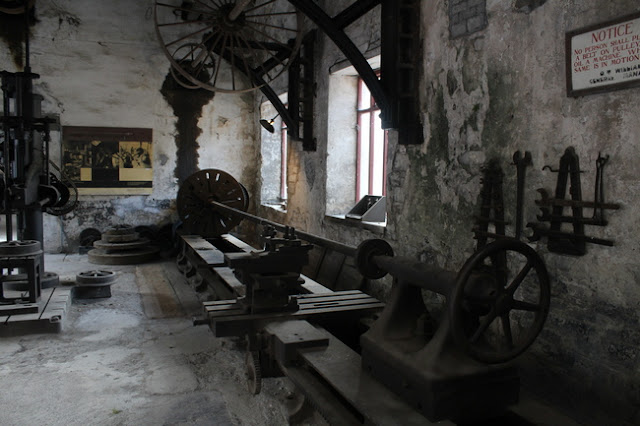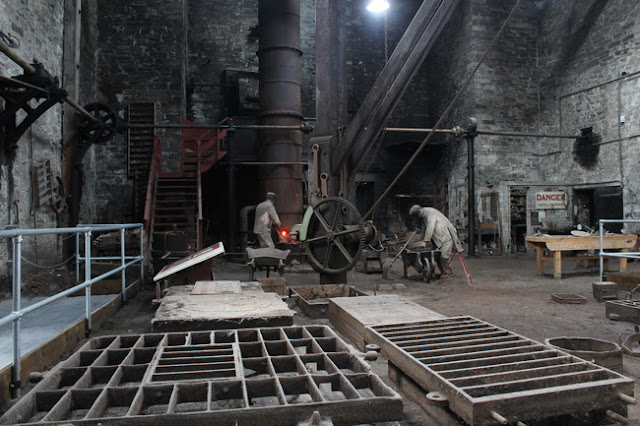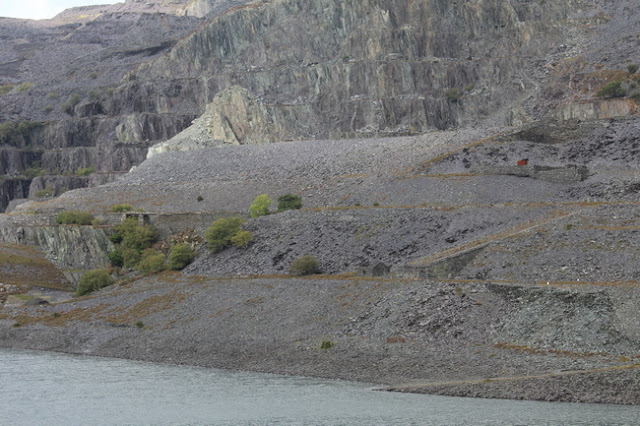A visit to the Llanberis Lake Railway, National Slate Museum and the site of Dinorwic Quarry
The mountains above Llanberis in North Wales were for many years chipped away at the Dinorwic Slate Quarry to produce slate for the roofs of the world. That slate would be brought down from the mountain and much of it dispatched to the coast to be loaded in to ships. Due to its nature it had to be handled carefully and the best way was by rail. Llanberis once had railways on four gauges, the standard gauge of 4ft 8 1/2in of the London & North Western Railway's line through the town. 4ft of the Padarn Railway, the quarry's 'mainline' that took the slate to Port Dinorwic for export. 800mm of the Snowdon Mountain Railway that took tourists up the mountain since 1896 and 1ft 10 3/4in of the railways within the quarries. The wagons of the quarry railways were loaded four to a wagon on to the Padarn Railway wagons to take them to the port. The Padarn Railway closed in 1961 and the Dinorwic Quarry altogether in 1969. Since then a stretch of the former Padarn Railway along the lake has been reopened as the Llanberis Lake Railway at a slight change from the quarry gauge tracks of 1ft 11 1/2in. Three of the former Dinorwic Quarry Hunslet steam locos and a Ruston diesel were re-gauged to operate the line. The former workshops now form the National Slate Museum.
1914 Map (north side of Llyn Padarn)
Below - The Llanberis Lake Railway runs from a station close to the town and the Snowdon Mountain Railway, this was a modern extension built in 2003.
Details of the railway can be found on the Llanberis Lake Railway website.
Below - From the Llanberis station one of the quarries can be seen with its various working levels and inclines on the left as Dolbadarn runs round its train.
Below - Approaching Gilfach Ddu alongside the old quarry workshops out of shot on the right. The old map shows a railway line running where the road can now be seen.
Below - Approaching Gilfach Ddu station one of the quarries can be seen in the background. Note the line crossing the road in to the workshops.
Below - Part of the workshop building is used to maintain stock for the railway, just as it was when it was the quarry workshops.
Below - Dolbadarn is serviced between trains. The workshop building can be seen on the right.
Below - On the eastern edge of the old map an incline can be seen and this survives to the east of the Gilfach Ddu station.
Below- South of the incline a tunnel can be seen this is now sealed off. Much of the Dinorwic Quarry site is now a power station which also acts as a giant battery by pumping water up the mountain at times of low demand and generating electricity from turbines at times of higher demand. Until recently it was possible to visit the complex but the visitor centre has since closed and there is no public access.
Below - Next to the tunnel is the former engine shed for the 4ft gauge Padarn Railway. It was in this shed that 1848 built loco Fire Queen was shut up in 1886 when it was replaced with a new Hunslet loco, not emerging until the closure of the quarry in 1969. It has since been on display at Penrhyn Castle Museum.
Below - Close to the foot of the incline shown above is a small office building and the tracks that went under the roadway in to one of the quarries. The quarry is now used as a diving site.
Below - The former quarry now used for diving. Note the ariel ropeway across the quarry and the various working levels evident, each had narrow gauge lines from the incline to the west of the current Gilfach Ddu station.
Below - Another access to the above quarry was from a tunnel which had a narrow gauge line connecting to the incline.
Below - The building shown between the tunnel and the incline.
Below - The lower level has been refurbished and now demonstrates how the narrow gauge slate wagons were lowered from the various levels of the quarry to the Padarn Railway.
Below - The upper levels of the incline remain derelict.
Below - The roadway bridge under the lower level of the incline.
Below - At the foot of the incline a more gentle incline connected it with the workshops and the Padarn Railway.
The workshops can now be visited as the National Slate Museum. The workshops brought together various trades such as woodworking, metal working, foundries and forges to make and repair various pieces of machinery used in the complex. Much of the machinery was driven by lineshafts from a water wheel at the back of the site.
Below - A lathe driven from the lineshafts.
Below - A boiler off one of the Quarry Hunslet engines.
Below - Forges.
Below - Saw benches.
Below - The foundry.
Below - The pattern workshop.
Below - Sawmill.
Below - Lineshafts off the waterwheel.
Below - Electrical room in the yard in the centre of the site.
Below - Thomas Smith built steam crane, this is on 7ft gauge track (a common gauge for steam cranes) a 5th gauge for the Llanberis area.
Below - Another Thomas Smith machine is this crawler excavator.
Below - The yard at the centre of the workshop complex. The 4ft Padarn track and narrow gauge quarry tracks can be seen.
Below - In the car park are a row of buildings shown on the old map that are now various shops. This one was evidently a weighbridge.
Below - Next to the car park is a pit head building that has been moved to the museum site though is now closed and lacks an information board.
East of the above was the main part of the Dinorwic Quarry site, now occupied by the power station. Though not accessible there are good views from the A4086 across Llyn Peris and the various working levels and inclines can be seen.



















































No comments:
Post a Comment